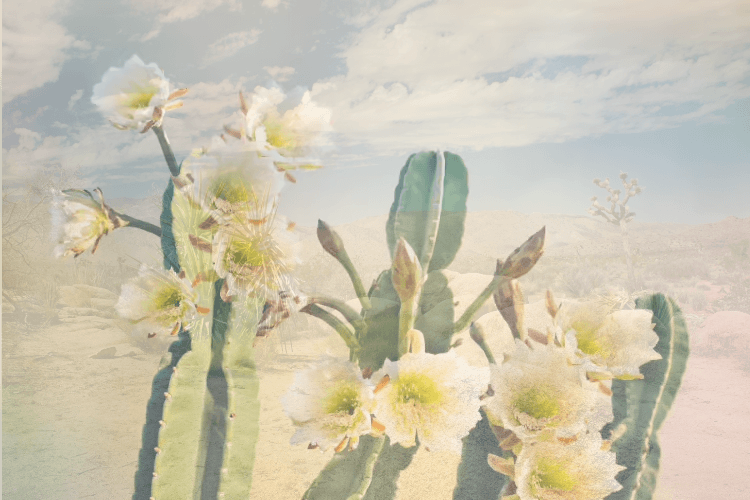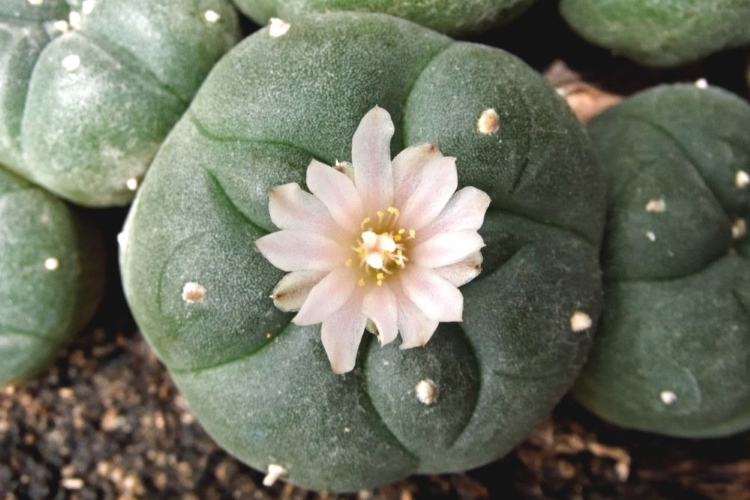
What Is a San Pedro Cactus Experience Like? What About Peyote Experiences?
San Pedro cactus and Peyote – two plant medicines with the power to take you on a magical, spiritual journey. To commune with the infinite.
Both contain mescaline, an alkaloid that interacts with receptors in the brain, causing hallucinations and shifts in thought patterns. Thanks to this molecule, psychedelic cacti can be used for spiritual exploration, improving mental health, fighting addiction, and more.
But what is a San Pedro cactus experience like? What about Peyote? What is a Peyote experience like? That’s what we’ll explore in this article.
In addition, we’ll go over the key differences between psychedelic cacti and Ayahuasca, psilocybin, and 5-MeO-DMT experiences.
Table of Contents
What Is a San Pedro Cactus Experience Like?
A San Pedro cactus experience can be visually stimulating — visual distortions, vibrant colors, and geometric patterns are common.
However, most people describe it as gentle, introspective, and emotionally profound.2
Enhanced sensory perception, feeling connected to nature or your surroundings, and emotional clarity are also frequently mentioned effects.
How to Consume San Pedro Cactus (Mescaline)
The most effective, traditional, and common way is to turn it into a brew by slicing it into small pieces, boiling it, and simmering it for several hours to extract the San Pedro cactus mescaline.
The resulting liquid is then strained and drank. Sometimes sweeteners or flavorings are added to improve the bitter taste of the brew.
Other ways to consume hallucinogenic cactus include:
- Chewing it fresh or dried
- Soaking it fresh or dried to make an intoxicating liquid
- Grinding it into a powder and swallowing or smoking it (the latter is not recommended)
San Pedro Cactus Psychedelic Effects
Here’s how Humphry Osmond, the psychiatrist who coined the term ‘psychedelic’ in 1953, described the effects of mescaline, the hallucinogenic in San Pedro cactus:
- Rainbow sheen of visual trails
- Scintillating patterns exploding across closed eyelids
- Auditory hallucinations
- Time distortion
- Lazy euphoria
- Fullness in the head
- Ineffable cosmic insights
- Sense of double consciousness
- Inherent presence of the sacred

As for side effects, he mentioned dizziness, nausea, hyperventilation, physical prostration, and increased heart rate.
Know that compared to psilocybin or LSD, the effects of mescaline are notoriously unpredictable and individual-dependent.
San Pedro Cactus’ Hallucinogenic Properties
Here are the most commonly reported San Pedro cactus hallucinogenic properties:
- Mild to major visual distortions (e.g., objects shifting form or size)
- More vivid, enhanced colors
- Moving patterns and intricate geometric shapes
- Distorted or heightened sounds
Compared to some other psychedelics, mescaline hallucinations are often more organic and flowing rather than intense and overwhelming.
Heinrich Klüver, the German psychologist who authored the 1928 book “Mescal,” reported that there are some repeating motifs such as latticework, filigree, tunnels, spirals, cobwebs, and polyopia.
Also, some people experience synesthesia — seeing sounds or hearing colors, for example.
What Is a Peyote Experience Like?
Here’s how Anna Heimkreiter, a German artist who took Peyote in the Mexican desert, described her experience:
“My mind feels sharp, very aware. Peyote does not cloud your mind — it brings you closer to consciousness. I perceive everything around me very intensely. I am one with my surroundings. […] Even the cold is more intense. […] I am alive with all my senses.”

How Is a Peyote Experience Different From San Pedro Cactus?
Since both Peyote and San Pedro cactus contain mescaline, the experiences are pretty similar.
The only difference is that Peyote has a higher mescaline concentration, meaning you’ll need a smaller dose and may have a more intense experience.
Up next, we’ll go over the key differences between hallucinogenic cacti and Ayahuasca, psilocybin, and 5-MeO-DMT experiences.
More Frshminds Psychedelic Guides
Be sure to check out all of our guides
- The Ultimate Psilocybin Retreat Center Guide
- The Ultimate Ayahuasca Retreat Guide
- Frshminds’ Guide To Ketamine Clinics
Peyote and San Pedro Cactus vs. Ayahuasca Experience
A Peyote or San Pedro experience is often introspective, gentle, and emotionally profound. Feeling connected to nature or your surroundings, visual distortions, and emotional clarity are also common.
An Ayahuasca experience, on the other hand, can be more intense. It often involves encounters with otherworldly entities.
Purging (vomiting and diarrhea) is possible due to its physical and psychological cleansing effects.
Consumption Method
Both hallucinogenic cacti and Ayahuasca are traditionally consumed as a brew.
Onset Time & Duration
- Peyote and San Pedro: onset within 30 minutes to 2 hours, lasting 8-12 hours or more.
- Ayahuasca: onset within 30-60 minutes, lasting 4-6 hours.
Potential Therapeutic Uses
Psychedelic cacti are often used for emotional healing, personal insights, and spiritual growth.
John H. Halpern, a psychiatrist and authority on psychedelics, believes Peyote is particularly beneficial to treating alcoholism and addiction.
Ayahuasca’s therapeutic uses include addressing trauma, addiction, and deep-seated emotional issues.
Risks, Safety, and Contraindications
With Peyote and San Pedro nausea and discomfort are common.
Usually, you’ll be advised to follow a strict diet for days or weeks before using Ayahuasca.
⚠ All psychedelics can interact negatively with other medications or pre-existing mental or physical conditions. You should always consult with a healthcare professional before attending a psychedelic retreat or using these substances recreationally.
Cultural Significance
Peyote holds a special place in Native American spirituality and culture, while San Pedro is linked to shamanic traditions across South America.
Ayahuasca is a traditional plant medicine in Amazonian indigenous cultures. It’s a central element in shamanic practices and rituals.
Peyote and San Pedro Cactus vs. Psilocybin Experience
Peyote and San Pedro experiences tend to be introspective and emotionally impactful, fostering a strong connection with your surrounding environment. Visual distortions and emotional clarity are also common.
The effects of psilocybin include profound insights and deep emotional experiences that may lead to life-changing, transformative, or mystical realizations. It also produces stronger changes in perception, emotions, and cognition.
Consumption Method
Cacti are usually drunk as a brew while psilocybin mushrooms can be dried and eaten or brewed into a tea.
Onset Time & Duration
- Peyote and San Pedro: onset within 30 minutes to 2 hours, lasting 8-12 hours or more.
- Psilocybin: onset within 20-60 minutes, lasting 4-6 hours.
Potential Therapeutic Uses
Hallucinogenic cacti can help you with emotional healing, gaining personal insights, growing spiritually, and overcoming addiction.
Psilocybin has shown potential in treating conditions like depression, anxiety, and PTSD.

Risks, Safety, and Contraindications
Mescaline cacti are known to cause nausea and discomfort.
Psilocybin can trigger or exacerbate mental health conditions. To reduce this risk, you should only use it in controlled settings with proper safety measures in place.
Cultural Significance
Peyote holds deep spiritual and cultural importance in Native American traditions, while San Pedro is integral to shamanic practices in South America.
Psilocybin mushrooms have been used in indigenous rituals and spiritual contexts across the globe. Their cultural significance is less centralized than these cacti.
Peyote and San Pedro Cactus vs. 5-MeO-DMT Experience
Peyote and San Pedro offer emotionally profound, introspective experiences and help you connect with nature.
They typically bring about mild to moderate visual distortions along with heightened emotional clarity.
5-MeO-DMT experiences are much more intense and profound. They’re frequently described as ego-dissolving — it feels like individual boundaries are transcended, leading to a sense of unity with all existence and losing the sense of self.
Consumption Method
Psychedelic cacti are typically consumed as brews. In contrast, 5-MeO-DMT is smoked, vaporized, or snorted (not as common).
Onset Time & Duration
- Peyote and San Pedro: onset within 30 minutes to 2 hours, lasting 8-12 hours or more.
- 5-MeO-DMT: onset within seconds, lasting about 10-30 minutes.
Potential Therapeutic Uses
Mescaline cacti are used for emotional healing, personal and spiritual growth, and overcoming addiction.
Researchers are exploring 5-MeO-DMT’s potential for treating conditions like anxiety, depression, and addiction.
Risks, Safety, and Contraindications
These cacti may cause nausea and psychological distress.
The intense experiences associated with 5-MeO-DMT might pose psychological challenges. Dangerous situations may also happen due to disorientation.
Cultural Significance
Native American spirituality and culture have a unique connection to Peyote, while San Pedro is associated with shamanic practices throughout South America.
5-MeO-DMT is often used in ceremonial contexts but its cultural significance is less centralized.
Key Takeaways on What Is a San Pedro Cactus Experience Like? And What Is a Peyote Experience Like?
The San Pedro cactus experience is gentle, introspective, and emotionally profound. Other defining features include sensory hallucinations, feeling connected to your surroundings, and emotional clarity.
The Peyote experience is essentially the same since the active compound in both of these cacti is mescaline.
In contrast, the Ayahuasca, psilocybin, and 5-MeO-DMT experiences are radically different and, thus, have distinct therapeutic benefits.
That’s why it’s so important to do your research before choosing the best psychedelic for you — you can learn more about each of them on our blog.
Regardless of which one you pick, you can find a diverse selection of retreats to choose from in our psychedelic retreat database.

Comments